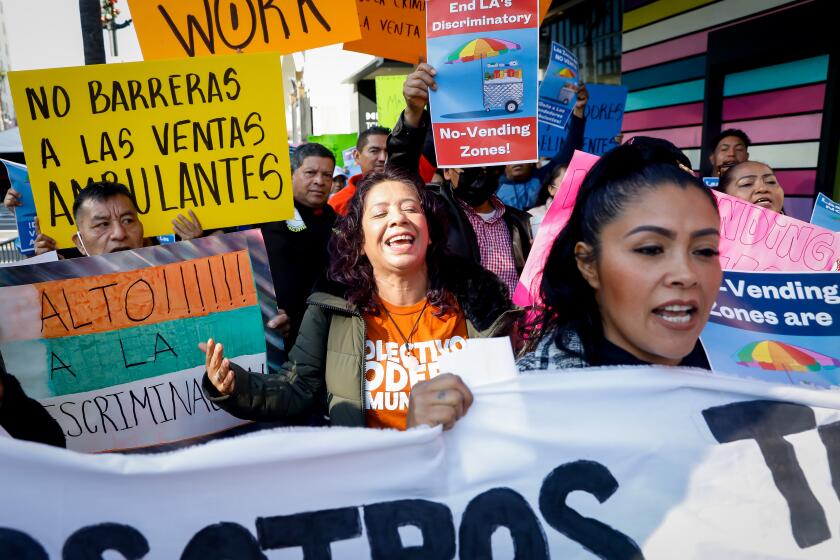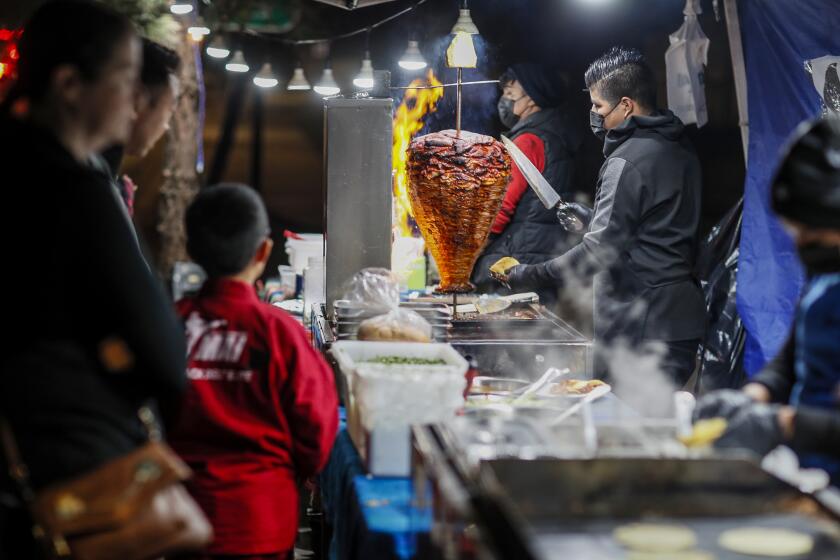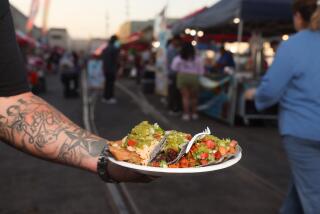Santa Ana shuts down over 100 street vendors, but many are back within days
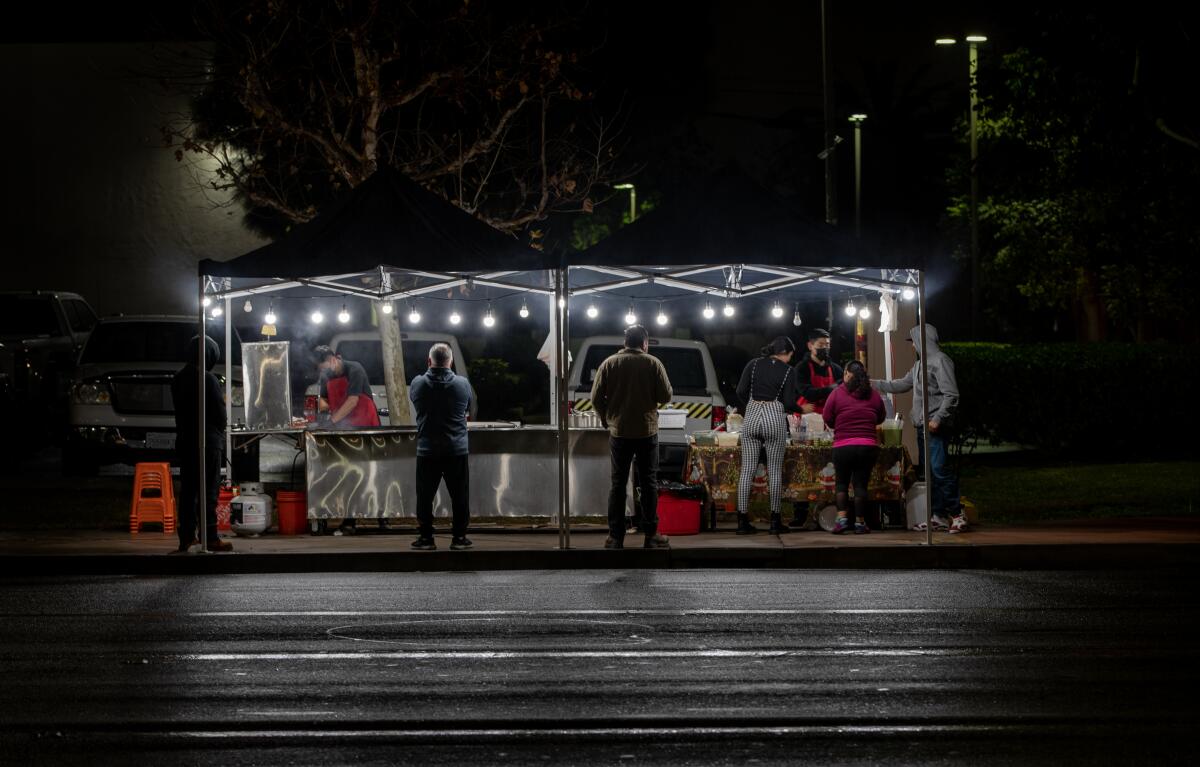
On a chilly night in late December, the scent of carne asada sizzling on a grill attracted hungry customers along First Street in Santa Ana.
Under tents with globe lights strung around the edges, jalapeños slowly charred. A charcoal grill piled with chicken crackled nearby.
About a month earlier, city and county officials trashed the stand’s food and seized containers and utensils worth roughly $2,000, the stand’s cook said as he manned the grill and served tacos to customers lined up on the sidewalk.
“All they left was the grill, the table and the water,” said the cook, who declined to give his name for fear of retribution from the city or county. “I’m just trying to put food on the table.”
The man is one of more than 100 street vendors in Santa Ana shut down in recent weeks for allegedly selling food “unfit for human consumption” and for lacking proper permitting, city officials wrote in a news release last week.
But his stand reopened a few days later, as did many of the others.
Under the California Retail Food Code, food trucks and mobile food vendors are required to obtain a county health permit. But many street vendors say they cannot afford the sinks and water tanks needed to qualify for a permit. Nor is that equipment suited for their small, mobile operations, they say.
The city and the Orange County Health Care Agency launched the joint enforcement effort in November after members of the public and some businesses expressed concerns about how vendors were storing and handling food, according to city officials.
“While enjoying meals from street vendors has become popular, we cannot allow unsafe food conditions to endanger public health,” Mayor Valerie Amezcua said in a prepared statement.
Christine Lane, the county’s director of environmental health, said the agency has received reports of people falling ill after eating street food, but the most recent complaints have been “primarily for operating without a health permit.”
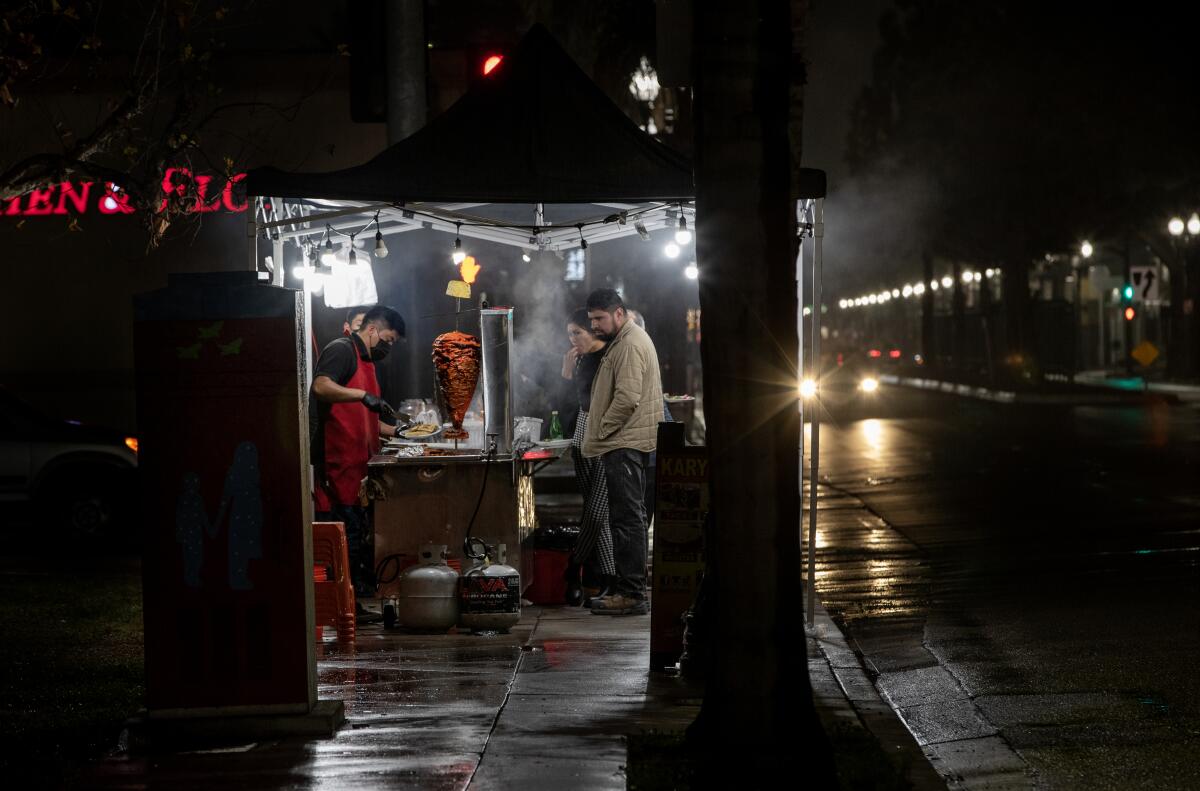
Customers say the vendors deliver a culinary experience that fits a city with a population that’s nearly 77% Latino.
Thomas Mercado, a general contractor from San Diego, stopped at a taco pop-up along 1st Street on a recent night before returning to a nearby motel where he’s staying while he completes a job. He ordered two tacos, scooping cilantro and onions and squeezing fresh lime on them before taking a bite.
Mercado, 43, was born in San Diego but lived for years in Mexico. The vendors remind him of his time there, he said.
“I would rather eat here than a sit-down restaurant,” he said. “It’s more comfortable. These are my people, cooking my food.”
Street vendors, primarily Latinos, have hawked chile-dusted fruit, corn on the cob, tacos and easy to prepare treats across Santa Ana for decades.
Erualdo González recalls getting frozen treats from paleteros who pushed three-wheeled carts full of ice cream when he was growing up in the city in the 1980s. But when the vendors ventured into the city’s middle-class neighborhoods, people complained, said González, a Chicano studies professor at Cal State Fullerton.
Food trucks faced a similar battle in Santa Ana. In 2006, taco truck operators successfully sued the city for the right to park in the same spot all day. In 2017, they beat back proposed city regulations that would have forced trucks to stay a certain distance from street corners and provide restrooms for customers.
“It has been part of Santa Ana’s DNA, at least dating back to the 1970s, to have these other food options that are outside the traditional brick and mortar businesses,” González said. “Part of it is cultural, part of it’s economic, and it’s the fabric of the city.”
In Santa Ana, outdoor grills serving tacos, tortas, quesadillas and burritos exploded in popularity during the COVID-19 pandemic, setting up in front of businesses and restaurants or in the driveways and backyards of homes.
Other cities have also started to push back on the vendors, but a 2018 state law that largely decriminalized street vending has left them with limited enforcement options.
San Diego and Santa Monica this year prohibited vendors from selling in certain areas. Vendors have sued the city of Los Angeles over the right to sell in restricted zones, including Hollywood Boulevard.
A pair of street vendors along with a trio of community organizations sued the city on Wednesday, hoping to eliminate “no-vending” zones.
In Anaheim, as in Santa Ana, city officials recently teamed with the county health department to confiscate equipment.
From January through October this year, the Anaheim enforcement program resulted in more than 100 citations for illegal street vending and 85 equipment-impound cases, according to the city.
On average, the county healthcare agency receives about 40 complaints about street vendors in Santa Ana per month. In Anaheim, the monthly average is closer to 100.
But in both cities, efforts to keep unlicensed vendors off the streets have been largely unsuccessful.
Sometimes employing lookouts, street taco vendors stay a step ahead of Anaheim’s enforcement efforts, frustrating officials and nearby restaurants.
Juan, a chef working a grill outside an auto repair shop on Main Street in Santa Ana, said he’s unsure how to get permits. He declined to provide his last name for fear of retribution from county or city officials.
A new state law, SB 972, that takes effect in January will make obtaining a health permit easier for street food vendors. But taqueros will be required to cook meat off-site at a licensed commissary kitchen — an impractical option.
In mid-December, Juan said, health officials shut down his grill and threw out the food. The disruption cost the owner, who also operates a food stand in Los Angeles, about $1,000 and Juan a day’s pay. The business was closed for three days before reopening, Juan said as he sliced al pastor from a vertical rotisserie.
“This is the work we know how to do,” he said.
More to Read
Sign up for Essential California
The most important California stories and recommendations in your inbox every morning.
You may occasionally receive promotional content from the Los Angeles Times.
